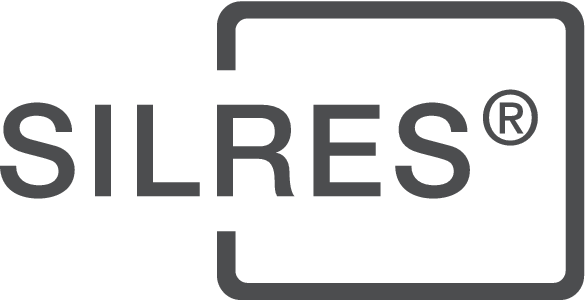SILRES® H44

SILRES® H44 is a powdered, condensation curing phenyl silicone resin with excellent solubility in various organic solvents. The product can be used as a binder or as an impregnation agent for porous materials. Due to its compatibility with organic resins, SILRES® H44 can also be used to modify, or to partly replace, phenolic resins in the respective compounds.
Compared to other silicone resins SILRES® H44 cures relatively fast at elevated temperature. It is therefore particularly suitable for fully automated production lines.
When fully cured, SILRES® H44 provides water repellency and excellent electrical insulation properties. Composites made of SILRES® H44 show long-term stability against weathering, moisture and UV light; they can therefore be exposed continuously to constantly changing climatic conditions, UV radiation and temperatures significantly higher than 300 °C (572 °F).
Properties
Uncured:
- Silicone resin with phenyl and methyl groups
- Solid
- Typical delivery form: powder (flakes available on request)
- High solubility in organic solvents
- Fast heat curing when catalyzed
Cured:
- Relatively flexible (compared to other phenyl silicone resins of the SILRES® series)
- Excellent heat stability
Specific features of SILRES® H44
- Condensation-curing
- Electrically insulating
- Filler compatibility
- Heat resistant
- Hydrophobic
- Solvent-free
- UV & weathering-resistant
Data sheets
- Impregnation agent for porous materials
- Binder for composites made of inorganic mineral fillers
- Binder for laminates made of fibrous fillers, cloths, woven or non-woven reinforcing materials
- Typical fields of industrial applications: household appliances, mechanical engineering, automotive, electrical industry.

SILRES® H44 is supplied as powder. It is readily soluble in ethanol (technical quality, water content < 2 wt.%), butanol, acetone, aromatic hydrocarbons, ketones, ethers and esters. However, it is insoluble in methanol and aliphatic hydrocarbons.
The curing of SILRES® H44 can be accelerated by a number of catalysts. The curing speed depends on the type of curing agent, the catalyst amount and the curing temperature. Please note: curing acceleration is most efficient with liquid catalysts or when the resin is processed in solvent. Adjacent table lists some typical catalysts and the resulting gelling times at 150°C as a function of the catalyst quantity (solution of 50 wt.% SILRES® H44 in toluene; catalyst quantities given in % by weight, based on solid silicone resin).
IMPORTANT: the pot life of catalyzed resin solutions usually is limited, even at room temperature. We therefore recommend to add the catalyst immediately before use and to process the catalyzed mixture within the next few hours.
As curing speed may considerably vary within certain limits, these figures are intended as a guideline only. We recommend running preliminary tests to optimize conditions for the particular application.
1. Glass Fibre Laminates
Please note: manufacturing prepregs and laminates is a complex process that needs a thorough control of various process parameters, such as temperature, catalyst quantity, nature of catalyst, solvent type, machine specific conditions, etc. Therefore, the following indications are inteded as a guide only, and we recommend running preliminary tests to optimize the conditions of your particular process.
Since fully cured SILRES® H44 provides water repellency, excellent electrical insulation properties, outstanding heat resistance and long term stability against weathering, moisture and UV light, this silicone resin is often used as a binder for laminates made of fibrous fillers, cloths, woven or non-woven reinforcing materials. The following process illustrates a typical production sequence for the manufacture of glass cloth laminates:
SILRES® H44 is dissolved in toluene, or any other suitable organic solvent, to form a resin solution with a solids content of about 10-20 % by weight. The curing catalyst is added right prior processing; for the purpose of storage-stable prepregs WACKER® Catalyst F 100%, zinc acetylacetonate or related metal salts of acetylacetonate and of long-chained carboxylic acids proved most useful as catalysts.
The glass cloth is then impregnated by the catalyzed silicone resin solution either by spraying, or by running the fabric through an impregnation bath. The solvent subsequently is evaporated in a drying oven at moderate temperature (120 to 140 °C). Please note: the drying temperature must not be too high in order to avoid premature curing of the B-stage resin and of the prepreg web, respectively. Also a very long drying cycle can impair the storage stability of the prepregs made.
Depending on the target shape of the laminate product the prepreg web either is rolled-up in layers on a stainless steel mandrel, or it is cut up into smaller pieces which in turn are sandwiched to a layered stack. By applying heat (e.g. 200 °C) and high pressure (for the layered stack assembly: >10 bar) the B-stage resin converts into the C-stage to form a durable and flexurally very rigid composite.
Please note: inserting a PTFE coated glass fabric between the pressing plates and the layered prepreg stack can help to prevent the composite from sticking to the plates. Besides it has proven useful to first cool the composite down to 80 °C (or lower) before the laminating press is opened, as this minimizes the delamination risk during the decompression phase.
2. Socket Cement for Illuminants
As SILRES® H44 can be highly filled with mineral fillers, it often is used as part of socket cement formulations for light bulbs, neon tubes, energy saving lamps and high performance incandescent lamps. A typical socket cement formulation is produced as follows:
150 g SILRES® H44 are dissolved in a mixture of 95 g ethanol and 5 g acetone. Then 250 g finely ground ground quartz, 200 g calcite and 200 g micro-powdered talc are added and thoroughly mixed in a kneader. If necessary, more solvent can be used to adjust the consistency of the compound. Finally, triethanolamine (some 0.2 to 0.5 wt.%, based on the amount of solid silicone resin) is admixed to the socket cement formulation.
Due to its compatibility with phenolic resins SILRES® H44 can also be used as co-binder in the corresponding socket cement formulations. Typically a quantity of about 5 wt.% is sufficient to considerably increase the moisture resistance of the phenolic resin based socket cement.
Storage
Store in a dry and cool place.
The 'Best use before end' date of each batch is shown on the product label. Storage beyond the date specified on the label does not necessarily mean that the product is no longer usable. In this case however, the properties required for the intended use must be checked for quality assurance reasons.
Sales and support
Ann Arbor, MI 48108
United States
How can we help you?
- Do you need help in choosing a product or do you require technical support? If so, please contact our experts.


